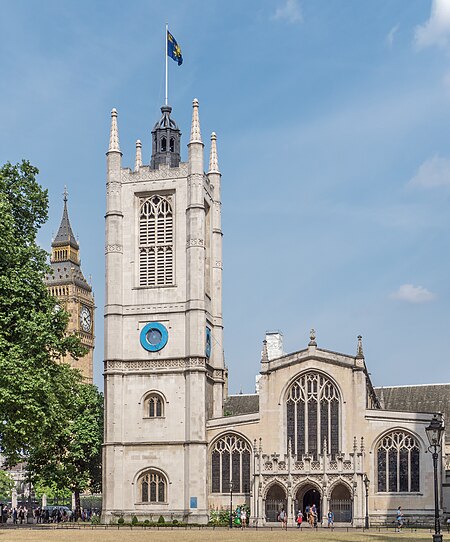St Margaret's, Westminster
12th-century Roman Catholic church buildings in the United Kingdom12th-century church buildings in England16th-century Church of England church buildingsChurch of England church buildings in the City of WestminsterChurches completed in 1523 ... and 5 more
EngvarB from September 2013Former Roman Catholic churches in EnglandGrade I listed churches in the City of WestminsterJ. L. Pearson buildingsWorld Heritage Sites in London

The Church of St Margaret, Westminster, is in the grounds of Westminster Abbey on Parliament Square, London, England. It is dedicated to Margaret of Antioch, and forms part of a single World Heritage Site with the Palace of Westminster and Westminster Abbey.
Excerpt from the Wikipedia article St Margaret's, Westminster (License: CC BY-SA 3.0, Authors, Images).St Margaret's, Westminster
St. Margaret Street, City of Westminster Millbank
Geographical coordinates (GPS) Address External links Nearby Places Show on map
Geographical coordinates (GPS)
| Latitude | Longitude |
|---|---|
| N 51.5 ° | E -0.12694444444444 ° |
Address
Saint Margaret's Church (St Margaret, Westminster Abbey)
St. Margaret Street
SW1P 3JX City of Westminster, Millbank
England, United Kingdom
Open on Google Maps











